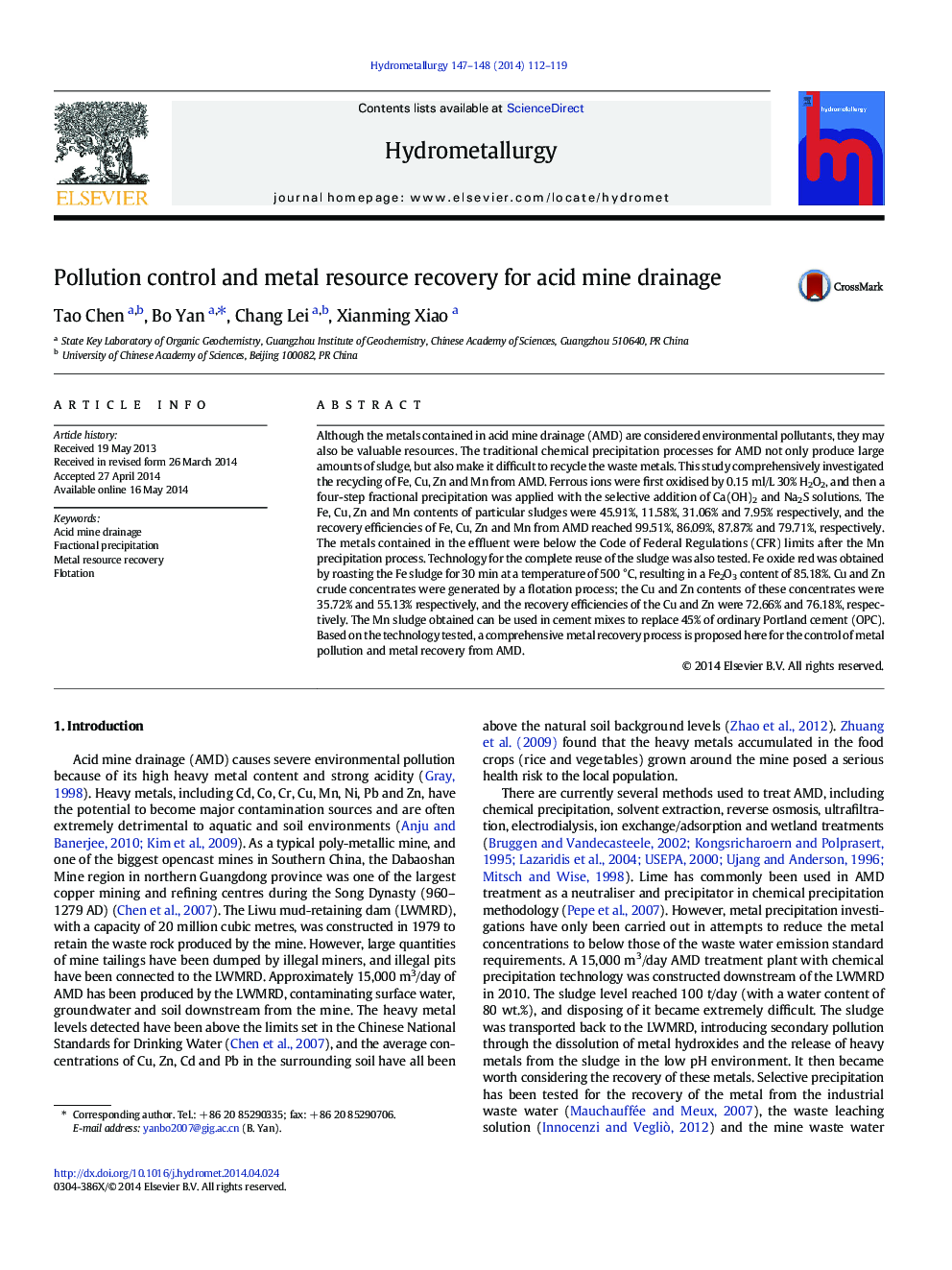| Article ID | Journal | Published Year | Pages | File Type |
|---|---|---|---|---|
| 212099 | Hydrometallurgy | 2014 | 8 Pages |
•Fractional precipitation was used for metal recovery from acid mine drainage.•Roast and flotation technology was used for settling sludge refinement.•Commercial-quality Fe oxide red and rough concentrate of Cu and Zn were obtained.•A solidification technique was employed for Mn settling sludge.
Although the metals contained in acid mine drainage (AMD) are considered environmental pollutants, they may also be valuable resources. The traditional chemical precipitation processes for AMD not only produce large amounts of sludge, but also make it difficult to recycle the waste metals. This study comprehensively investigated the recycling of Fe, Cu, Zn and Mn from AMD. Ferrous ions were first oxidised by 0.15 ml/L 30% H2O2, and then a four-step fractional precipitation was applied with the selective addition of Ca(OH)2 and Na2S solutions. The Fe, Cu, Zn and Mn contents of particular sludges were 45.91%, 11.58%, 31.06% and 7.95% respectively, and the recovery efficiencies of Fe, Cu, Zn and Mn from AMD reached 99.51%, 86.09%, 87.87% and 79.71%, respectively. The metals contained in the effluent were below the Code of Federal Regulations (CFR) limits after the Mn precipitation process. Technology for the complete reuse of the sludge was also tested. Fe oxide red was obtained by roasting the Fe sludge for 30 min at a temperature of 500 °C, resulting in a Fe2O3 content of 85.18%. Cu and Zn crude concentrates were generated by a flotation process; the Cu and Zn contents of these concentrates were 35.72% and 55.13% respectively, and the recovery efficiencies of the Cu and Zn were 72.66% and 76.18%, respectively. The Mn sludge obtained can be used in cement mixes to replace 45% of ordinary Portland cement (OPC). Based on the technology tested, a comprehensive metal recovery process is proposed here for the control of metal pollution and metal recovery from AMD.
